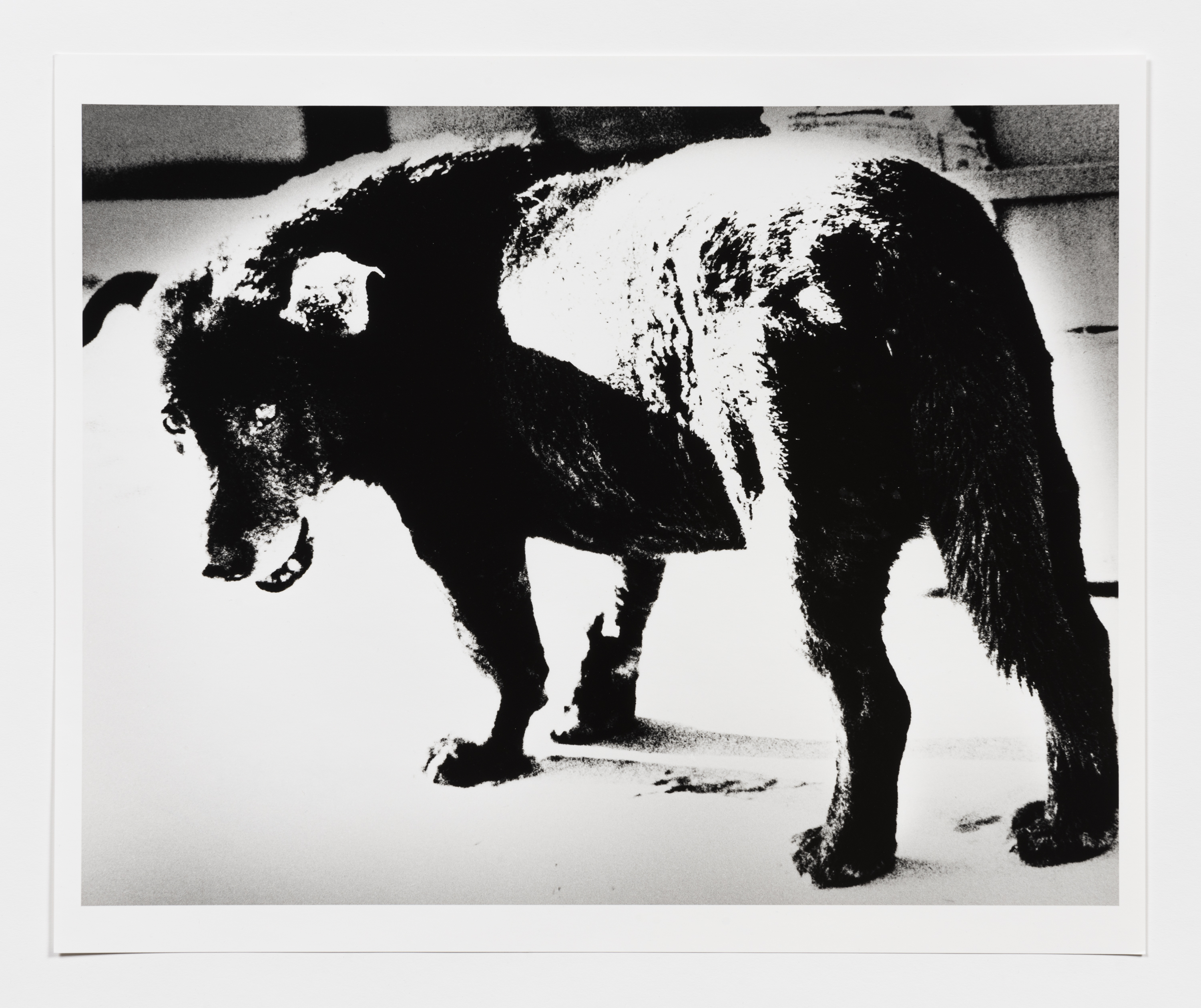Daido Moriyama
(Ikeda, Osaka, 1938 - )
Stray Dog, Misawa, Aomori
1971 (printed 2007)
Gelatin silver print
14 x 17 in. (35.6 x 43.2 cm)
Collection of the Akron Art Museum
Knight Purchase Fund for Photographic Media
2009.98
More Information
After centuries of gradual evolution and reverence for tradition, in the 1960s and 1970s Japanese culture was undergoing rapid, shocking and continual change. Daido Moriyama’s raw, radical photographs addressed the darker side of the “new” Japan of the economic miracle. Considered the central figure in Japanese photography in the late 1960s and early 1970s, Moriyama has continued, despite personal crises, to produce edgy, influential art over the intervening decades. Moriyama’s early training and work were as a graphic designer, and the influence of popular culture and advertising can be found in many of his images. At age 21 he began studying photography. In 1961 he moved to Tokyo and got a job assisting Eikoh Hosoe (Knight Award winner for 2003). Hosoe’s generation had explored unconventional printing styles and broken cultural taboos with a frank (for the time) exploration of sensuality, sexuality and strongly stated emotions. Yet the work’s elegance, care and formalism subtly reminds us of its artfulness. Moriyama’s generation came into its own in a more feverish, jarring time. Adopting a snapshot aesthetic, he began shooting from odd angles and on the fly, even from moving vehicles. Although taken with a still camera, his images seem like frames from a motion picture. Moriyama’s first book of photographs focused on the seamy, lurid and neglected aspects of urban life. In later books, he glories in contrasting the luridness, frenzied pace, claustrophobia and pressures of urban life with close-ups of sensual delights—a sunflower swaying in a sunny breeze or a perfect apple waiting for the first bite—and with metaphorical images, such as the delicate fraying edges of a decaying, blood red rose. All of this is conveyed in grainy, black and white prints. Not just the visual and tactile senses are awakened by his images but also kinesthetic, auditory and olfactory sensations. Moriyama is a master of evocation rather than depiction, the glimpse rather than the gaze. His work set the stage for contemporary photographer artists such as Wolfgang Tillmans whose images present a stream-of-consciousness visual monologue.
Keywords
AnimalsPhotography
Dog
Japan
Black and White

